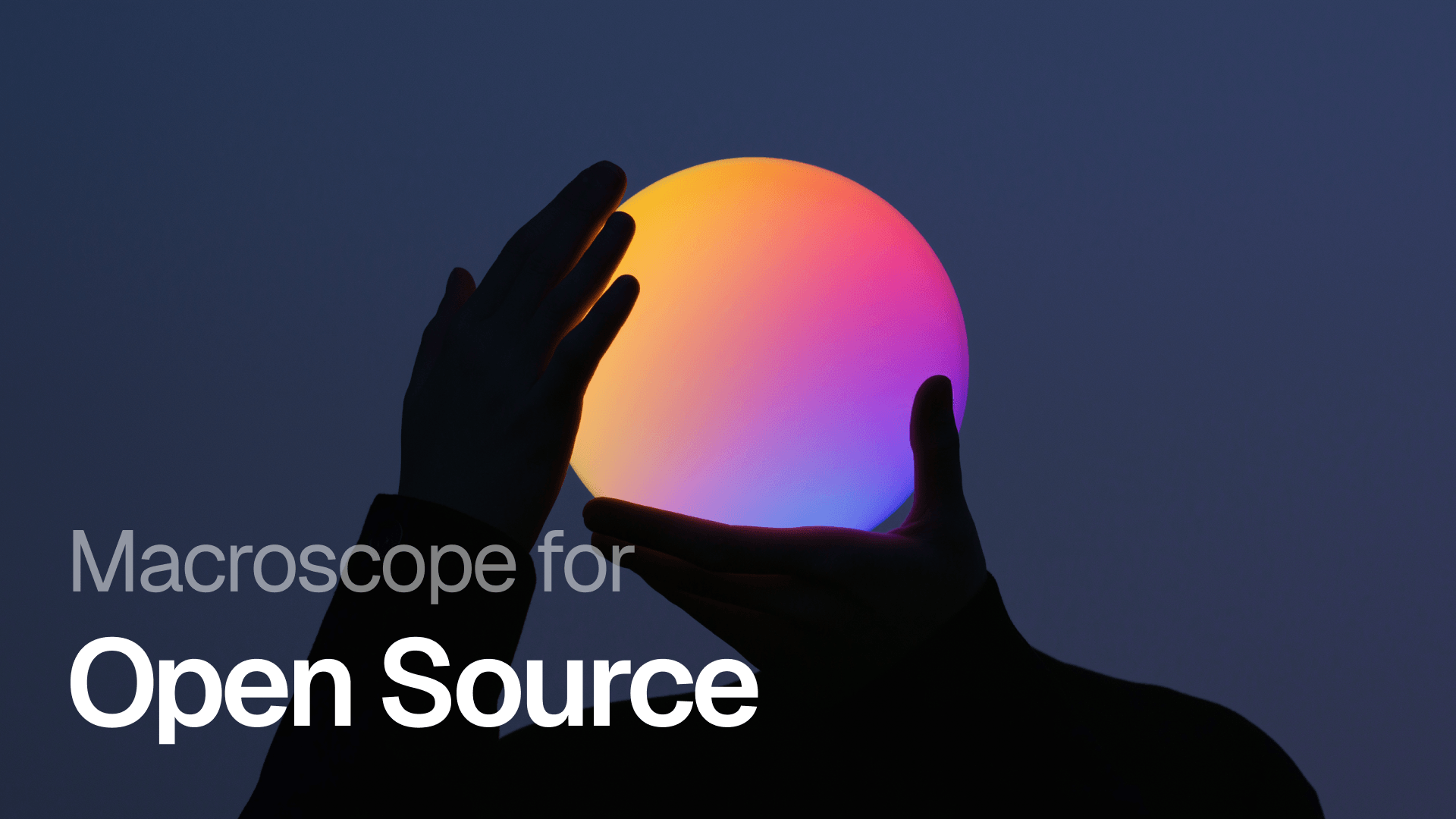Macroscope for Open Source
We are offering Macroscope available at no cost for non-commercial open source projects.

tl/dr: We are offering Macroscope to non-commercial open source projects for free. Apply here. We're also looking to sponsor the best open source projects.
Starting today, we’re making Macroscope available at no cost for qualified open source projects.
The pain points that Macroscope solves for traditional software companies are just as relevant, if not more painful, for open source communities:
- Shipping fewer bugs. It’s already becoming completely standard for every professional software company to have an AI code review tool that serves as a last-line of defense to catch bugs. The cost of shipping bugs is far too high, and well-built AI review tools are capable of identifying correctness issues faster than human reviewers. But in our research, usage of AI Code Review tools is still quite low amongst the open source community, in large part due to cost. By making Macroscope free for open source projects, we hope to make that a thing of the past.
- Reducing the time-suck of code review. Open source contributors spend time not just doing work, but doing the work around the work: explaining what they changed, how their changes impact the codebase, and how their code should be tested by reviewers. This takes time for contributors. Macroscope expedites this process by automatically describing changes, which saves time for reviewers and improves the standard review experience for maintainers of open source projects. And of course, reviewers can spend less time reviewing PRs by virtue of relying on Macroscope to do a first-pass of identifying correctness issues and suggesting fixes.
- Understanding what’s happening with minimal project management burden. Maintainers and stakeholders of open source projects care about understanding how their codebase is changing, which is an especially difficult problem given the distributed/decentralized nature of open source. Maintainers have the added difficulty of managing a project without some of the luxuries and affordances of a traditional enterprise (e.g. project management and collaboration tools, product managers and other folks whose jobs are to pull together a picture of what’s happening). Macroscope’s status features solve this by summarizing codebase activity automatically, so that every stakeholder can understand what’s happening without process overhead.
As a reminder, here are some of Macroscope’s features:
Auto-generated code summaries
For each pull request, Macroscope generates a concise summary and suggests where reviewers should start. This helps reviewers quickly understand what changed and where to focus their attention, especially in larger PRs.
If a PR has no description, Macroscope automatically adds a summary directly to the PR description. If a contributor has already written a PR description, Macroscope posts its summary as a comment. Macroscope’s summaries can also be inserted directly into PR templates.
When changes are made to a PR (e.g. a new commit) Macroscope automatically updates the PR description to reflect the latest changes.

Macroscope automatically generates PR summaries to guide reviewers.
Bug detection in PRs
Macroscope finds and fixes bugs in your PRs. We believe Macroscope has the best signal-to-noise ratio of any AI code review tool. In our benchmark evaluation, Macroscope identified more bugs than any other tool, and did so with a modest “comment volume” of 2.6 average comments per PR. Meaning, it catches more bugs than any other tool, and does so without spamming you with noisy comments in your PRs.
When Macroscope spots a bug, it will add a review comment describing the issue, and propose a diff that can be applied to fix the bug. You can converse with Macroscope directly in the PR comments to seek clarification and propose alternatives– Macroscope’s code research agent will respond in the PR.

Results from September 2025 benchmark evaluation. Macroscope identified the most bugs from a dataset of 100+ real-world production bugs drawn from open source repositories. CodeRabbit ranked #2 in bug detection, but generated over 4X more review comments.
Visibility and insights
Macroscope leverages codebase activity to automatically create summaries of how the codebase is changing, what projects and features are being worked on, and who’s contributing what. We think this will serve as a helpful automated birds-eye view for maintainers of open source projects, and for any stakeholder of an open source project who wants to understand what’s changing without digging through individual PRs.

Beyond code summaries and code review, Macroscope classifies work into projects, analyzes what’s changing in your codebase and where, and generates productivity insights. These insights are available to members of your project’s GitHub organization.
We’re sponsoring open source
We're also looking to sponsor the best open source projects.
Recommend a project by tagging @macroscope on X or emailing us at contact@macroscope.com.
Get access to Macroscope
Maintainers of non-commercial open source projects: apply for free access to Macroscope.
We’re still learning what features are most valuable for open source projects, so we're excited to hear your feedback.
Not open source? Try Macroscope free for 2 weeks.
Note: we reserve the right to limit usage based on reasonable use criteria.